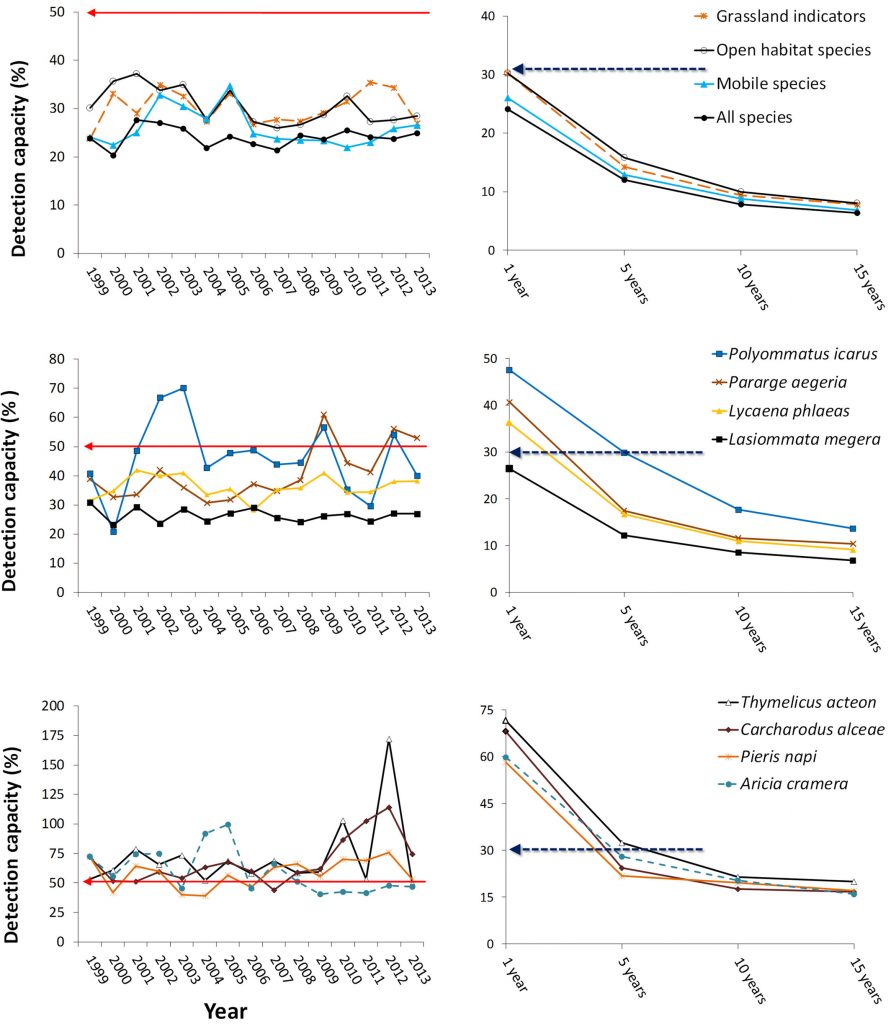Butterfly monitoring networks, such as the Catalan Butterfly Monitoring Scheme (CBMS) initiative, could be used to assess the impacts of intensive agriculture and transgenic crops on biodiversity. This is what researchers of the University of Lleida (UdL) and Agrotecnio research center affirm after developing a model that could detect population declines of these insects between 10% and 30%, opening the door to future studies. The results of the research, carried out in collaboration with the Universitat Politècnica de Catalunya and the Museu de Ciències Naturales de Granollers, have been published in the Ecosphere journal.
Butterflies are are good bioindicators, capable of reflecting environmental changes such as global warming or changes in land use. “Butterfly abundance in the landscape depends on many factors and population declines they are often difficult to detect,” explains UdL researcher Marina Lee. To develop an applicable model for future studies, they have analyzed CBMS data on 135 species of these lepidopterans with the aim of detecting differences in the population abundance according to the type of habitat management.
The team compared the abundance of butterflies across two landscape types: agricultural landscapes with more than 40% of the area with field crops and orchards and more natural landscapes, where the coverage of these habitats was below 20%. They tested 4 multi-specific and 8 specific butterfly indicators common in farmland. CBMS data was analyzed year by year and grouping them into periods of 5, 10 and 15 years. The researchers calculated the relative detection capacity (DN) of the model, that is, the magnitude of population change with respect to the more natural environment needed to find differences in butterfly abundance between the two landscape types.

Figure 2 of the article: Detection capacity of Welch’s t‐test to detect differences in butterfly abundance across two landscape use types.
“When monitoring environmental impacts, it is essential to detect population decline as soon as it occurs so that the appropriate management decisions can be taken rapidly” says Lee. The results indicate that the data generated by the CBMS would allow to detect 30% declines in butterfly populations in a single year. Detection sensitivity reached 10% when analyzing 15-year data for all multi-species indicators and for two farmland species, the Wall Brown (Lasiommata megera) and the Small Copper (Lycaena phlaeas).
The calculated relative detection capacity obtained is very good, taking into account that in risk assessments of transgenic crops on non-target organisms, ranges of 25-50% DN are considered acceptable. “This high sensitivity of the data indicates that, with a good design, CBMS data could be used to study the impacts of agricultural practices on the environment,” adds the UdL professor and coauthor of the article, Ramon Albajes.
Long-term environmental monitoring in agricultural areas through butterflies
Lee’s research work provides a way to monitor the agricultural environment by observing the butterfly population. The productivity and sustainability of the agricultural systems depends on the capacity of agricultural biodiversity to deliver essential ecosystem services such as nutrient recycling, biological control of agricultural pests or pollination. This is why it is so important to have suitable tools for understanding how agricultural management is affecting biodiversity and taking the most appropiate management decisions.
Long term environmental monitoring in agricultural areas can provide this necessary information. However, specific plans to monitor agricultural management do not exist in most areas because of its economic cost. “Butterfly monitoring networks such as the CBMS are so important because these networks generate solid, long term data on biodiversity that are probably the only feasible option or monitoring effects of agricultural management,” says the author.
The study was partially supported by a grant from the Spanish Government (MICINN project AGL2011-23996) and a FI-DGR scholarship to M. Lee from the Catalan Government.


